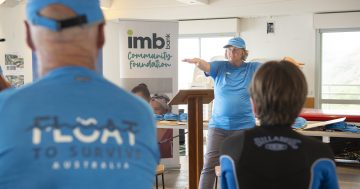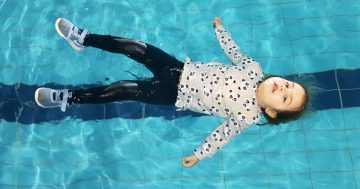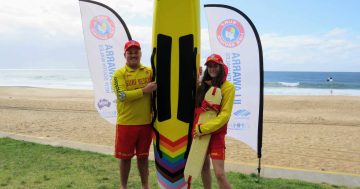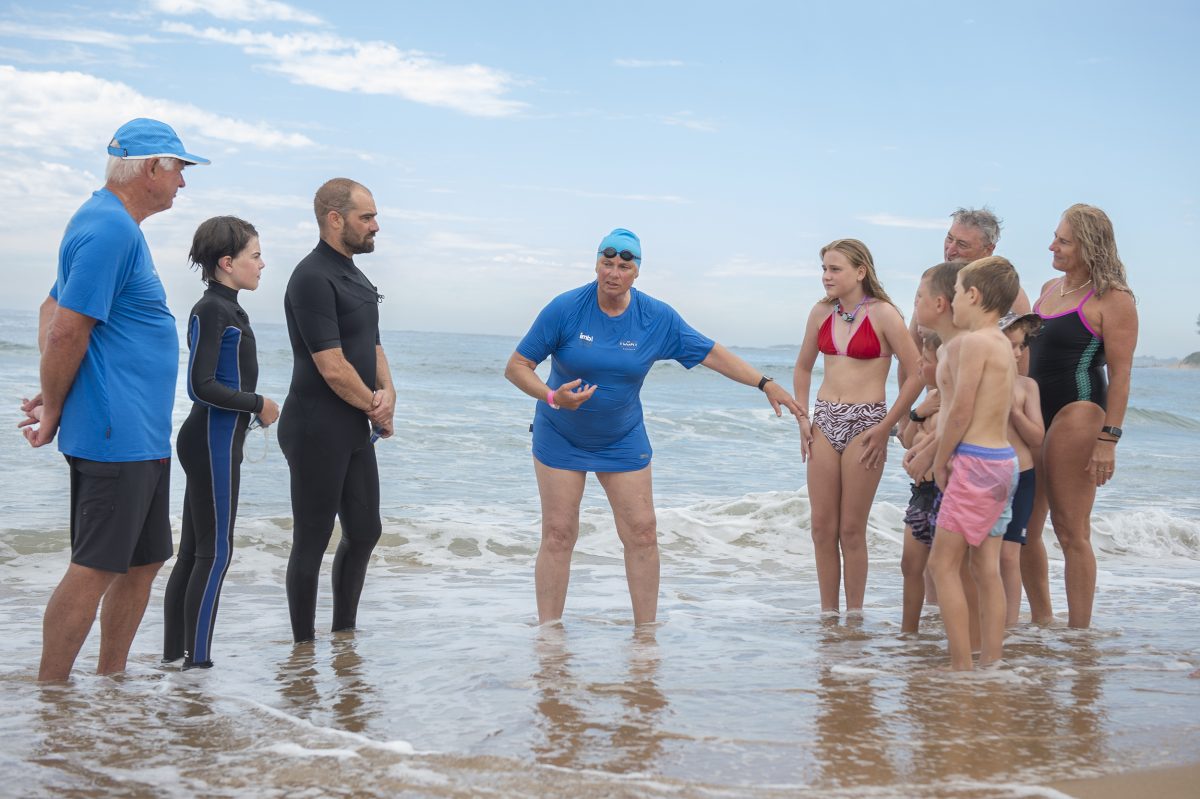
Former Olympian Shane Gould gives a demonstration at the launch of the Float to Survive campaign at the Sandon Point Surf Life Saving Club. Photo: Dianne Engesser/Narrative Post.
“Self-rescue” is at the centre of an anti-drowning campaign newly launched at Sandon Point by Aussie swimming legend Dr Shane Gould AM MBE.
Sandon Point Surf Life Saving Club (SPSLSC), which last month became the first surf club in Australia to adopt the Float to Survive drowning prevention campaign, officially launched the initiative with the Olympic gold medallist as its ambassador, in a bid to help turn the tide on drowning.
It comes in the wake of yet another horror December that saw 35 drownings across Australia, including three in the Illawarra in eight days.
Campaign manager and SPSLSC president Ken Holloway encountered the initiative after attending a conference on drowning in the Illawarra held for the region’s culturally and linguistically diverse (CALD) communities, where Australian Professional Ocean Lifeguard Association (APOLA) president Bruce “Hoppo” Hopkins spoke.
Hoppo, a Bondi Rescue star and head lifeguard, shared some fascinating insights from his experience as a veteran lifeguard of 30 years.
“He said when he would instruct people to swim between the flags, they’d say ‘I can’t, it’s dangerous’, and that’s because many countries, perhaps the majority of countries, use a traffic light system in which green means ‘go’ or ‘swim’, yellow means ‘take caution’ and red means ‘danger’. So the Australian Surf Lifesaving flags read like a warning sign to them,” he says.
“The other thing is that most people from CALD backgrounds don’t like sitting in the middle of a busy beach – they go to bays, rivers, lakes, bodies of water with fewer people. After the talk, Hoppo was inundated with people asking whether there was another message other than ‘swim between the flags’ – one that applied to them.
“We realised that while there were many preventative messages in the market, there was little to advise what to do when someone is actually in trouble in the water.”
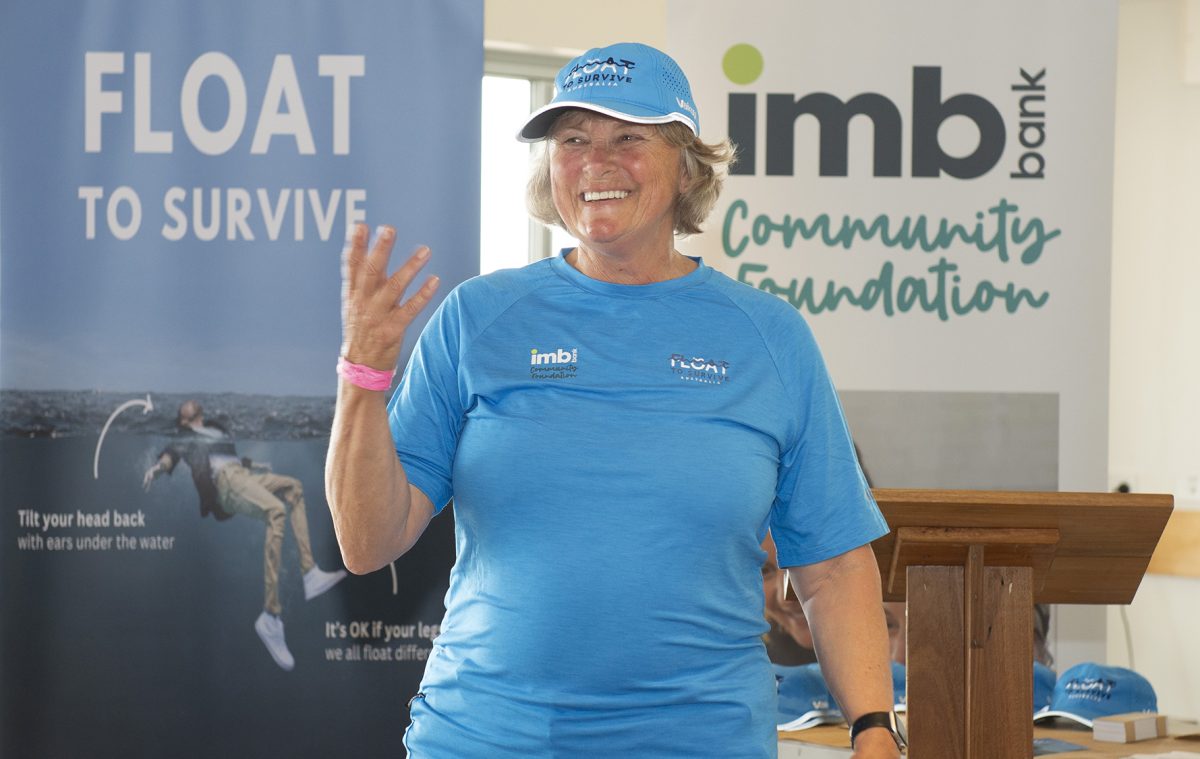
Shane, who holds a PhD related to a study of swimming culture in Australia, is a Float to Survive ambassador. Photo: Dianne Engesser/Narrative Post.
The Float to Survive initiative aims to raise awareness and change behaviour to avoid drowning by teaching energy conservation techniques that help keep airways above water.
It encompasses five steps: lean your head back and float; control your breathing and keep calm; spread your arms and legs for balance; use a circular motion to maintain buoyancy and; signal for help.
“If you get in trouble in deep water and start panicking, this fight or flight reaction sets in. You want to fight the water and run away. We want to get the message out that you have to resist that natural instinct and simply float,” Ken said.
“By floating you’re conserving energy, get your breathing back and that allows you to make better decisions.
“When you get down to the nuts and bolts, people drown because they can’t keep their heads above water. The longer you can stay afloat, the better your chances of survival.”
Float to Survive ambassador Shane Gould, who holds a PhD related to a study of swimming culture in Australia, said Australia needed to face certain realities and tighten up its messaging, or risk complacency in the public.
“There’s this narrative that Australia is a nation of swimmers – we’re not. In my studies, I saw the drowning statistics – children who couldn’t swim 50 metres when they left school and adults who couldn’t swim 10 or 20 metres in the ocean,” she said.
“There’s also this thinking that migrants and children are the only demographics at risk. Yes, there are high levels of drownings in those communities, but over 80 per cent of drowning deaths last year were males, 40 per cent were adults over the age of 55, and people born overseas accounted for only around a quarter of those drownings.”
Supported by a $15,000 grant from the IMB Bank Community Foundation, SPSLSC will hold instructional sessions and boost the “Float to Survive” message in the community.
Shane said part of that would be clarity around what floating encompassed.
“People tend to think it’s this static thing; it’s not always,” she said. “If you get in trouble in the water, not panicking is not enough. Staying calm, and taking control of the situation is the action. If you have the right insights and can awaken your own survival instinct to ‘self-rescue’ – and that’s what floating to survive is, a self-rescue technique – you’re much more likely to survive.”









